Oak is the most popular choice of hardwood flooring here in Long Island and in the United States in general. Oak is a very practical choice for hardwood flooring as it is a very durable wood that can last well over 100 years, as well as being readily available – it is grown and milled in the USA and especially here in the Northeast region of the country. It is very affordable when compared to other species of wood that are used for hardwood flooring and quite versatile as it can be stained almost any color of the rainbow. So what is the difference between Red Oak and White Oak and which is better? Most obviously, COLOR: Contrary to what the name suggests, White Oak is a darker wood than Red Oak. The color of White Oak is a mix of browns and tans ranging from dark brown to beige, while Red Oak is a lighter wood that ranges from almost white to a soft amber color. Red Oak has pinkish tones and red hues throughout. Either can be stained any color, and the visible differences between Red or White Oak diminish as you go darker with the stain color. Lighter stains and white washes on Red Oak will have a reddish or pinkish undertone to the color. Because White Oak is a darker wood, the same color stain applied to both Red and White Oak flooring will be darker on the White Oak floor than it is on the Red Oak floor.
Side by side red oak and white oak:
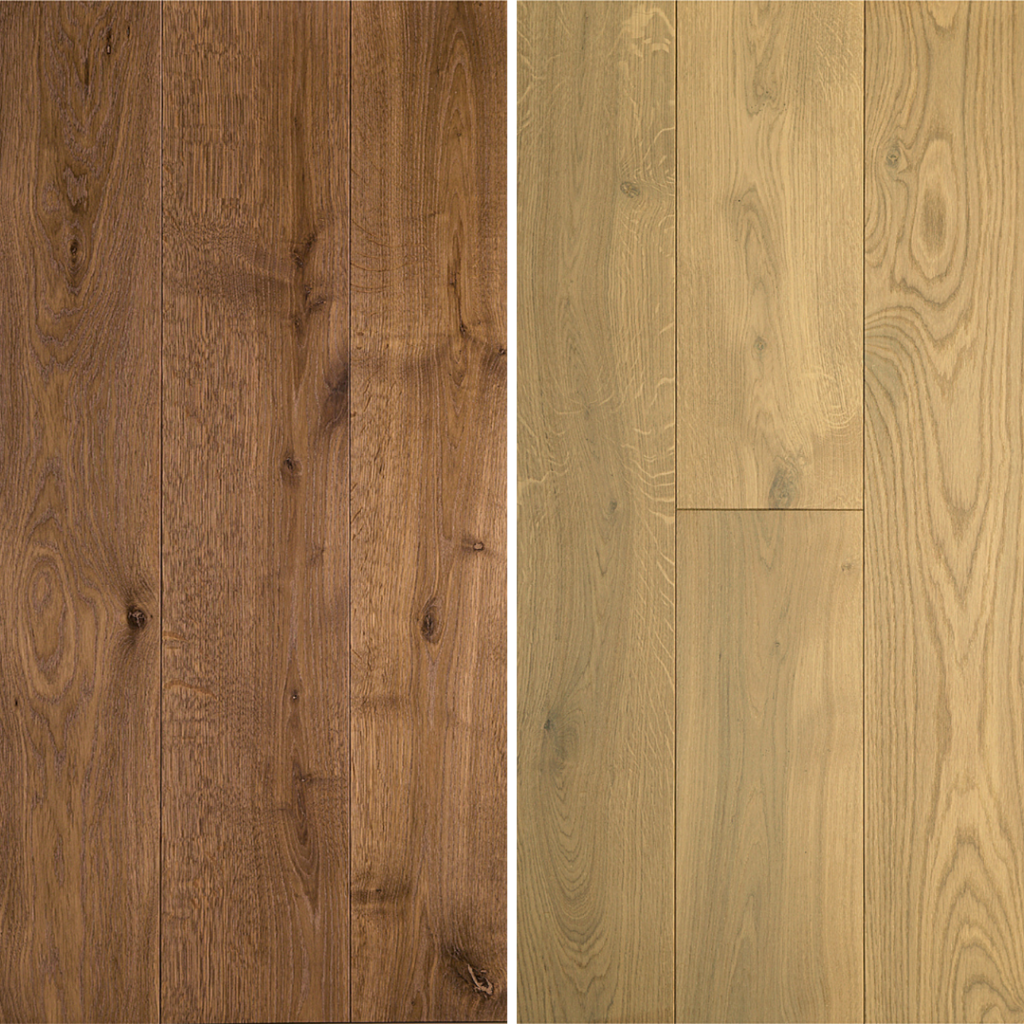
Red oak with stain color = dark walnut:
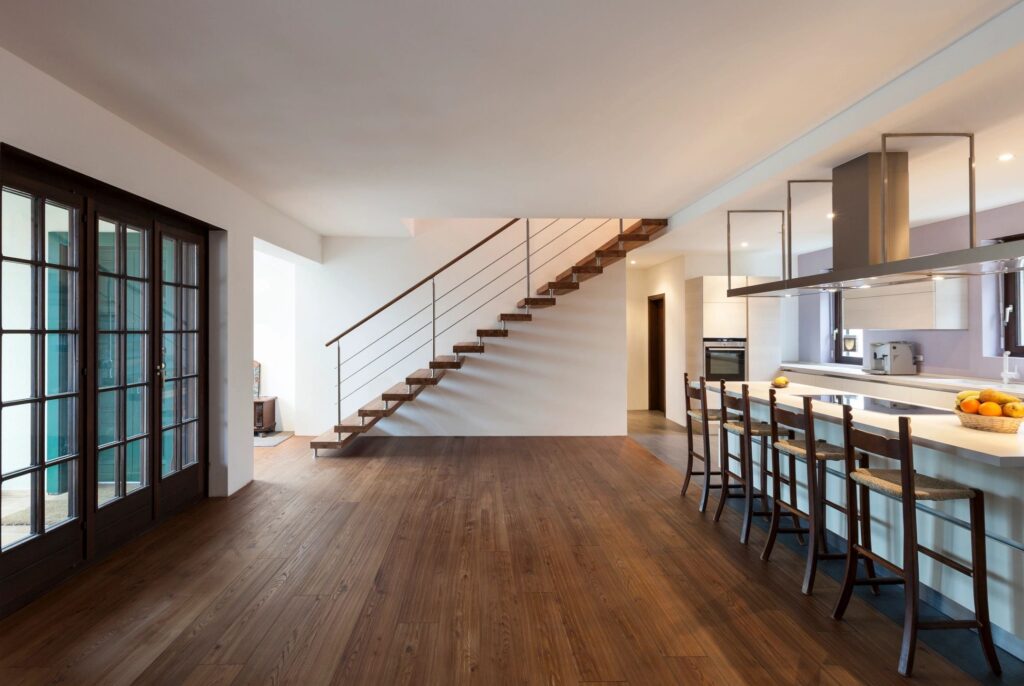
White oak with stain color =dark walnut:
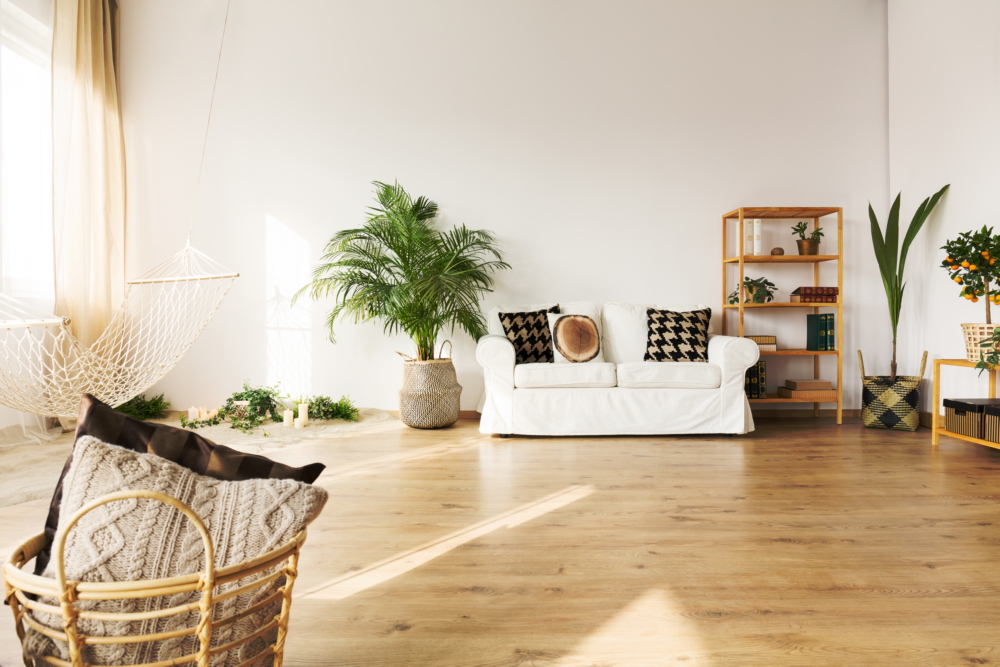
Hardness
White Oak is a slightly harder wood than Red Oak. On the Janka hardness scale, White Oak flooring scores a 1360 and Red Oak flooring a 1290. White Oak is also very dense, which makes it more suitable for outdoor furniture and boat building. Some claim that the density of White Oak makes it a more stable species (less seasonal movement) than Red Oak, but both types of hardwood flooring will have some seasonal movement. Both Red and White Oak flooring are excellent choices for long-term durability for most homes.
Grain Pattern
Red Oak grain patterns tend to be more unique or ”wild” than the finer, less pronounced grain pattern common to White Oak. The grain in White Oak runs straighter and tighter than Red Oak, with fewer swirls, circles or deviations. Red oak also has wider grain lines that can run in zigzag patterns, or subtle, wavy lines that are absent from White Oak. Another reason that Red Oak flooring displays a more prominent grain pattern than White Oak is because it is a lighter wood than White Oak. And on the other hand, the smoother look of White Oak can also be attributed to the fact that the dark grain is less noticeable against the darker wood.
Red Oak natural color:
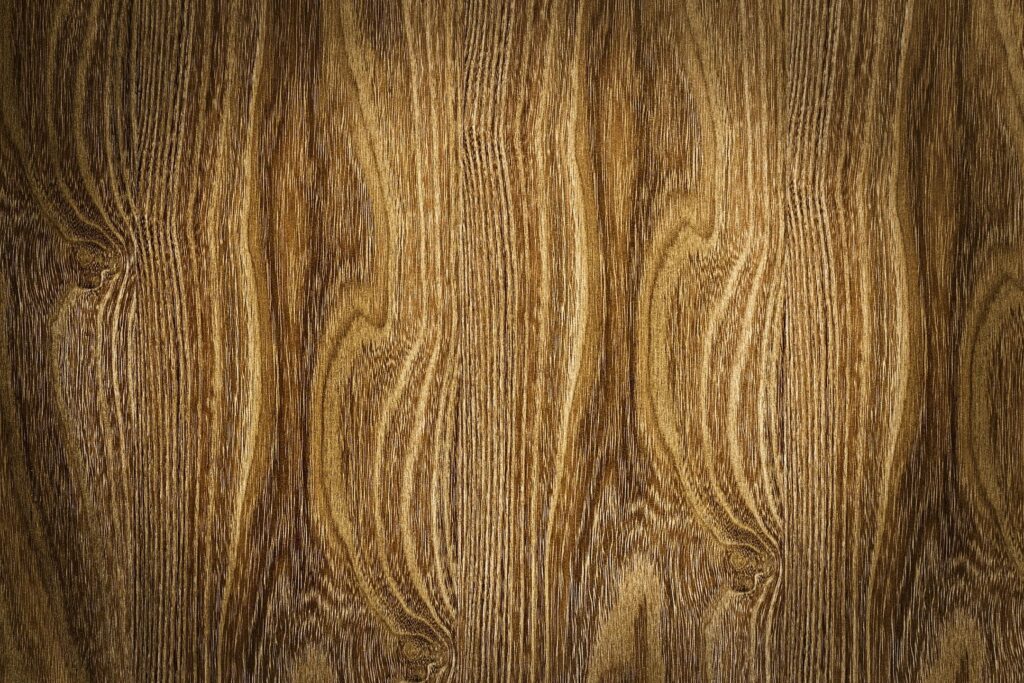
White Oak natural color:
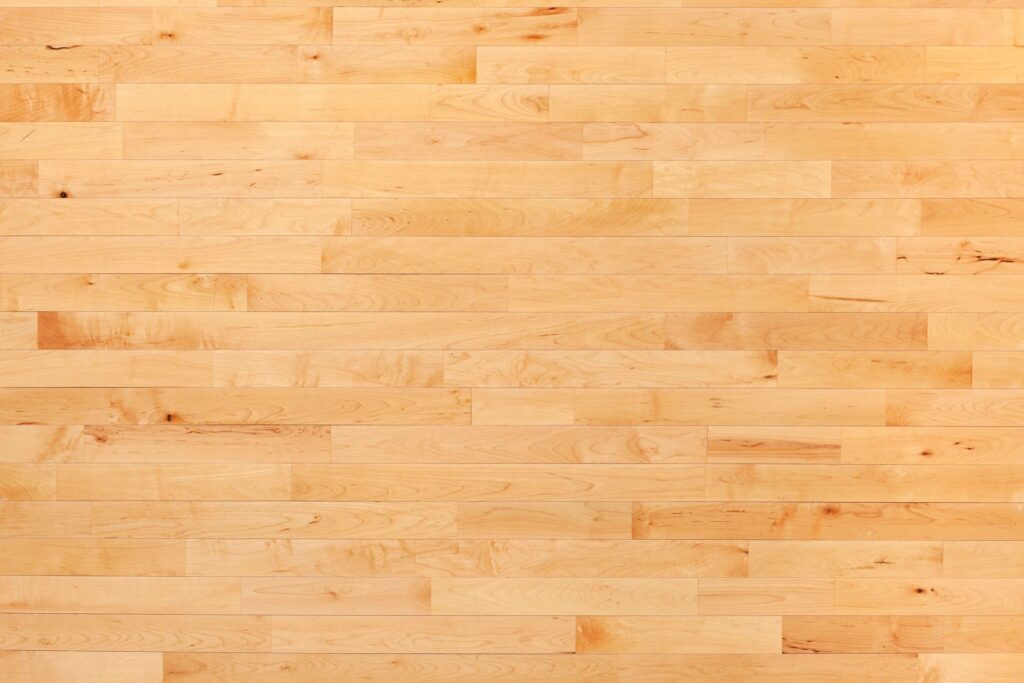
Matching Existing Acessories
Red Oak is far more frequently used in stair treads, Newel posts, handrails and banisters. If you have Oak stair treads already in your home that you need to match, chances are good that they are Red Oak. If you are installing new treads or railings in your home, White Oak will be slightly more costly since it is less commonly used, but not severely so.
Environmental Impact
Both Red and White Oak are considered to be a “greener” use of a National natural resource because they are farmed and grown in the United States. The carbon footprint of both types of wood is lower than that of exotic wood species like Brazilian Cherry or Tigerwood, for example, and because of forestry protection programs, Oak trees are constantly being replanted here in the U.S.
Price
There is not a major difference between the price of Red and White Oak. Because unfinished hardwood flooring is a commodity item, the price fluctuates from week to week. At times, Red Oak is more expensive, and sometimes White Oak costs more. The price will also vary based on width of the boards and grade of the wood.
White oak with stain color = golden oak:
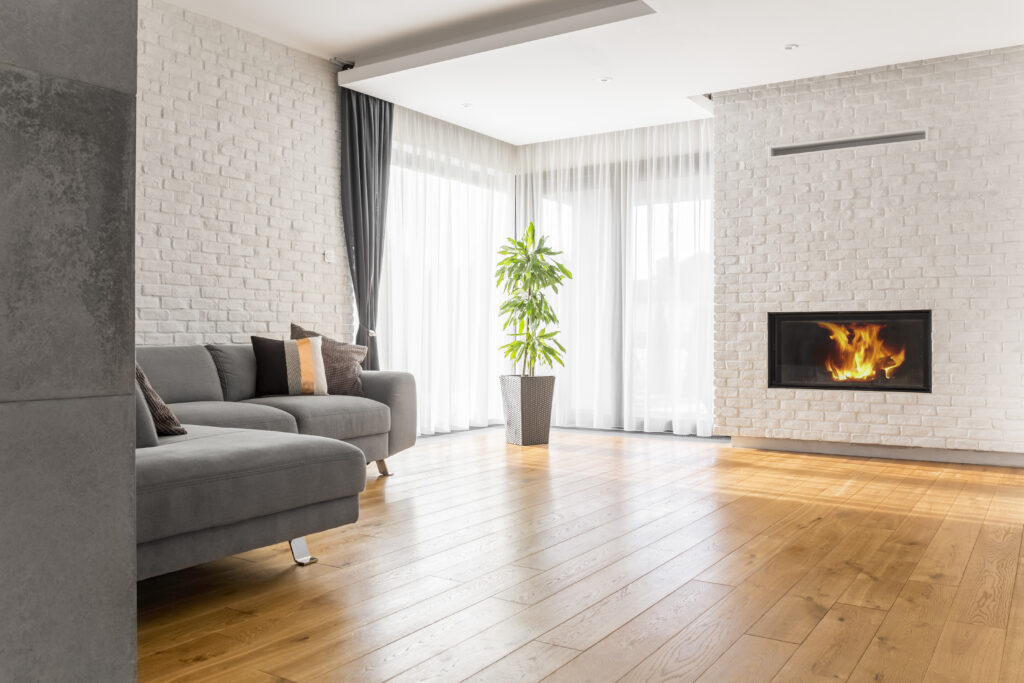
Red oak with stain color = golden oak:
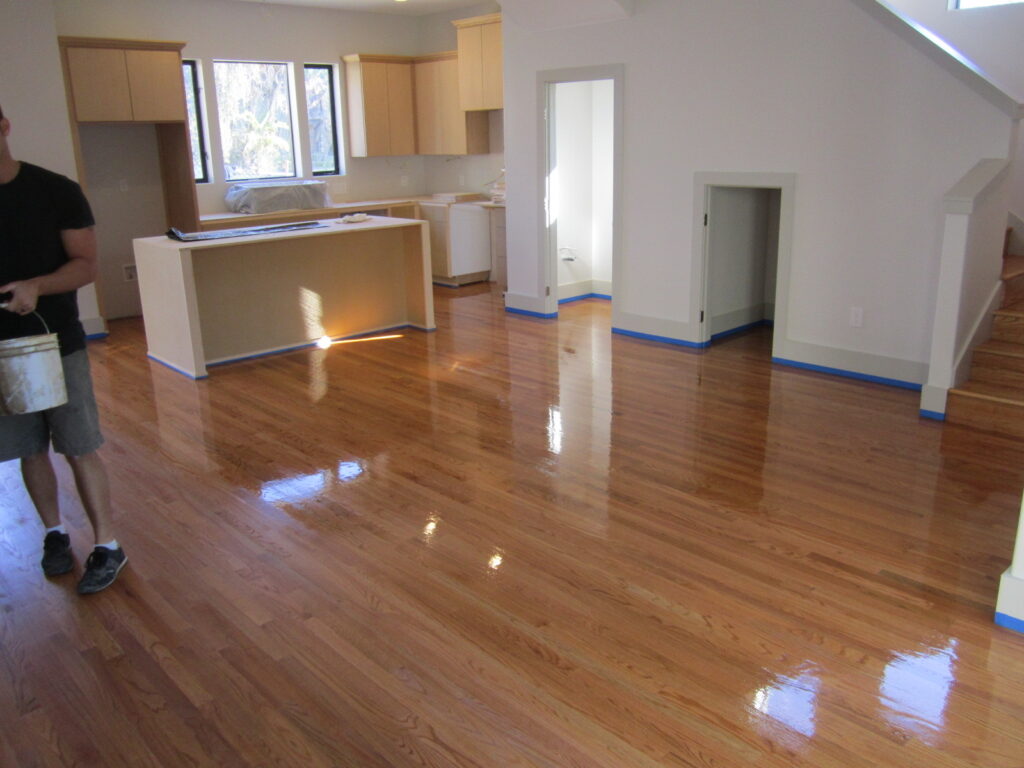
We hope that this has been helpful if you are planning a new hardwood flooring installation and are considering Red or White Oak. As previously stated, either is a fine choice for long-term durability and beauty. It’s really just a matter of taste as to which you prefer and what your overall goals are for a specific finish or look! A hardwood flooring expert can advise you as to which would be best for any particular color or finish. If you are matching an existing floor in your home, please be aware that there is more to matching hardwood than determining whether or not you have Red or White Oak! It is a bit more complex than that, as there are several different grades of hardwood flooring (Select & Better, #1 Common, #2 Rustic Grade, Character Grade, etc.) as well as different milling techniques — Plain Sawn, Quarter Sawn, Rift Sawn (I will cover this topic in the next blog post) – to be aware of as well! If you are unsure of what type of hardwood floor you have or what would be the best for your home.

